
Zoonar/O.Kovach/Zoonar/Getty Images
Soap making may sound like an old-fashioned chore, but mixing and molding your own bars allows you to create cleansing products without harsh chemical additives. These hand-crafted bars also make elegant gifts for family and friends. The process of making the soap is fairly straightforward, with the hardest part often being deciding on a recipe. Honey and oatmeal soap is an appropriate project for both beginners and experienced soap makers due to the accessibility of the ingredients.
Place a large saucepan or stockpot on top of a stove burner set to medium heat. Insert at least 1 pound of castile soap base or glycerin into the pot. To create a larger batch of soap, add two pounds of soap or glycerin. Cut the product into cubes to speed up the melting process.
Stir the soap mixture every one to two minutes until it is completely melted. Do not allow the mixture to boil.
Fill a small bowl with 1/2 ounce of honey for every 1 pound of soap. Place the honey into a microwave and heat it on high for 15 seconds. Use only 100 percent pure honey; avoid brands with filler items in them.
Remove the honey from the microwave and pour it immediately into the liquefied soap base. Stir the mixture to combine the two ingredients well.
Add 4 tablespoons of steel-cut oatmeal to the soap mixture for every 1 pound of soap. Stir the mixture to incorporate the oats thoroughly. Remove the pan from the stove burner and turn off the stove.
Locate pans or containers that have depths of 2 to 3 inches. Use muffin tins or empty yogurt cups to create round-shaped soap. For traditional bar-shaped soap, opt for bread pans or a shallow baking pan. Grease the inside of each cup or pan thoroughly with vegetable spray.
Put on oven mitts and pick up the sauce pan or stock pot. Pour the soap mixture evenly into the greased cups.
Lift the pan off the counter by 4 to 5 inches, and then drop it back onto the counter. Repeat the process two or three more times to remove air bubbles from the soap mixture.
Let the pan sit undisturbed until the soap is fully hardened, which takes around four hours.
Remove the soap from the pan by turning it upside down and gently tapping the bottom with a knife. If necessary, run the knife around the perimeter of each soap bar to release.
Cut the soap into evenly sized squares or rectangles, using a sharp, non-serrated knife. You don't need to cut the round soaps.
Related Articles

What Is Triple-Milled Soap?
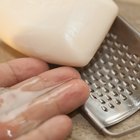
How to Make Bar Soap Into Liquid Soap ...

Homemade Bay Rum Soap Recipe

How to Slice a Bar of Soap in Half

What Is Triple Milled Soap?

How to Make Medicated Soap

How Does Homemade Soap Compare to ...
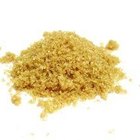
How to Make Sugar Soap

How to Make Dough in a KitchenAid Mixer
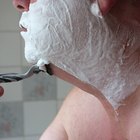
Shaving Soap Recipe With No Lye
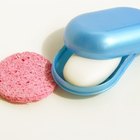
Disadvantages of Pears Soap

How Long Do You Bake Brownie Cupcakes ...

How to Clean Palladium Jewelry

Description of Palmolive Bar Soap

How to Cook Cheesecake in a Cupcake Pan
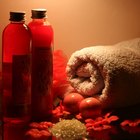
Homemade Natural Unscented Glycerin ...

How to Make Homemade Shampoo With Soap ...
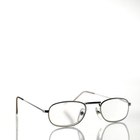
How to Make Your Own Eyeglass Cleaner ...

Shortbread Cookie Recipe

How to Make Beeswax Face Cream
References
Tips
- Add dried flowers such as lavender or rose into the soap mixture to enhance the appearance and increase the soothing properties. Crush the flower petals and add 4 to 5 tablespoons for each pound of soap.
- Dried herbs, such as thyme and rosemary make soothing additions to soap and enhance the fragrance. Herbs should be crushed and used in a ratio of 4 to 5 tablespoons per pound of soap.
- To add scent to your soap, mix in one to two drops of any essential oil, such as lavender or almond.
- Create a honey comb appearance in the soap's surface by cutting off a piece of bubble wrap and laying it in the bottom of the container before pouring the soap into it. Once the soap hardens, peel the bubble wrap off and discard.
Writer Bio
Kimberly Johnson is a freelance writer whose articles have appeared in various online publications including eHow, Suite101 and Examiner. She has a degree in journalism from the University of Georgia and began writing professionally in 2001.
Photo Credits
Zoonar/O.Kovach/Zoonar/Getty Images